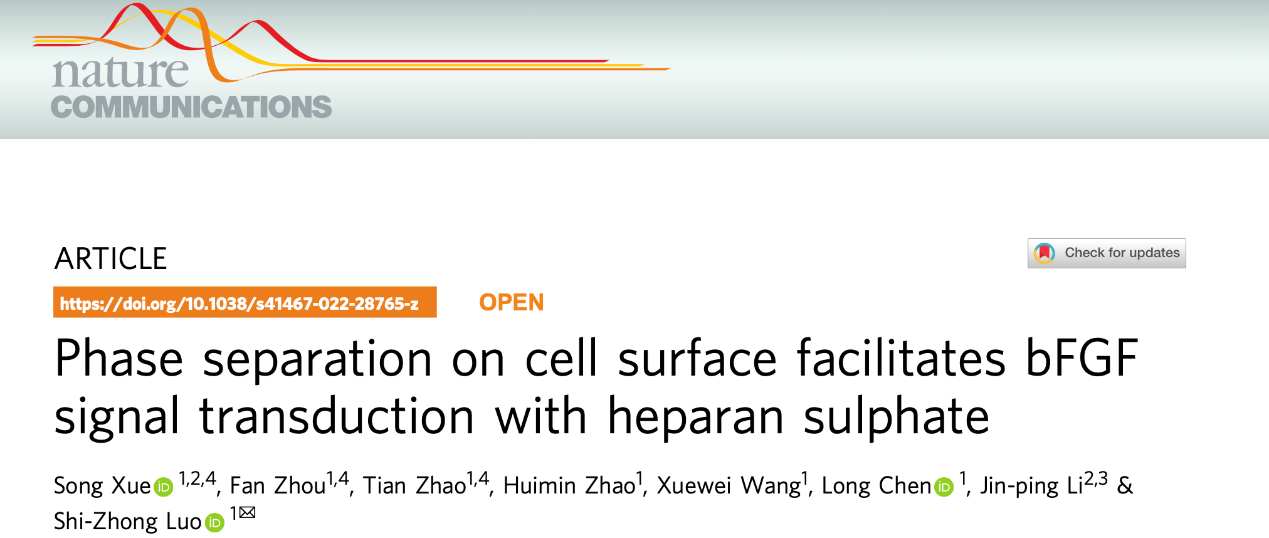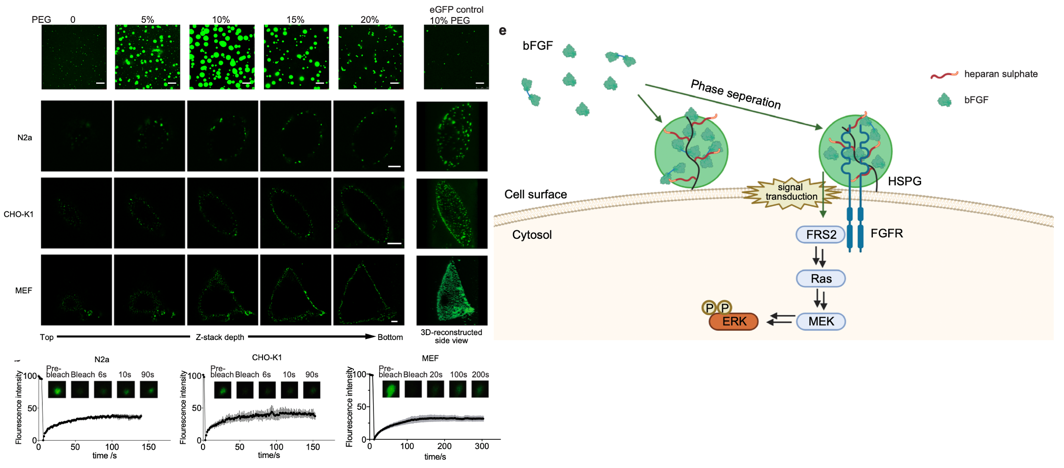Beijing Time March 2, 2022, "Nature Communications" published online the latest research results of Professor Luo Shizhong from our School of Life Science and Technology, titled "Phase separation on cell surface facilitates bFGF signal transduction with heparan sulphate". The paper reveals for the first time that basic fibroblast growth factor (bFGF) can undergo liquid-liquid phase separation (LLPS) on the cell membrane surface under the action of heparan sulphate, thereby activating downstream signaling pathways. This novel finding provides new theoretical and experimental evidence for the study of protein phase separation on the extracellular membrane.

The phase separation of proteins (LLPS) has been one of the research hotspots in the field of biology in recent years. The phase separation of intracellular proteins and nucleic acids is considered to be closely related to various physiological and pathological processes. Basic fibroblast growth factor (bFGF) is an important regulator of cell growth and differentiation. It can interact with the tyrosine kinase FGF transmembrane receptor (FGFR) on the cell membrane surface as well as heparan sulfate (HS), activating downstream signaling pathways. This study, through in vitro experiments and cell experiments on the phase separation phenomenon and regulatory factors of bFGF, reveals that bFGF can undergo phase separation on the extracellular surface of cells and activate downstream phosphorylation ERK signaling. This research, for the first time at the cellular level, discovered the phenomenon of extracellular protein phase separation, expanding understanding of the mechanisms and functions of phase separation under physiological conditions, providing new insights into how cytokines and other extracellular proteins regulate cellular physiological processes.

Professor Luoshi Zhong from the College of Life Science and Technology at Beijing University of Chemical Technology is the corresponding author of this article, with Dr. Xue Song, Master Zhou Fanshuo, and Ph.D. student Zhao Tian as co-first authors, and Beijing University of Chemical Technology as the first completion unit of the paper. This research work has received strong support from the National Natural Science Foundation of China and the Key Research and Development Program of the Ministry of Science and Technology.
Article link: https://www.nature.com/articles/s41467-022-28765-z (DOI: 10.1038/s41467-022-28765-z)


